America’s 25 Murder Capitals
25. North Charleston, South Carolina
> Murder rate: 17.4 per 100,000
> No. of murders: 19
> Violent crime rate: 735.4 per 100,000
> Population: 109,051
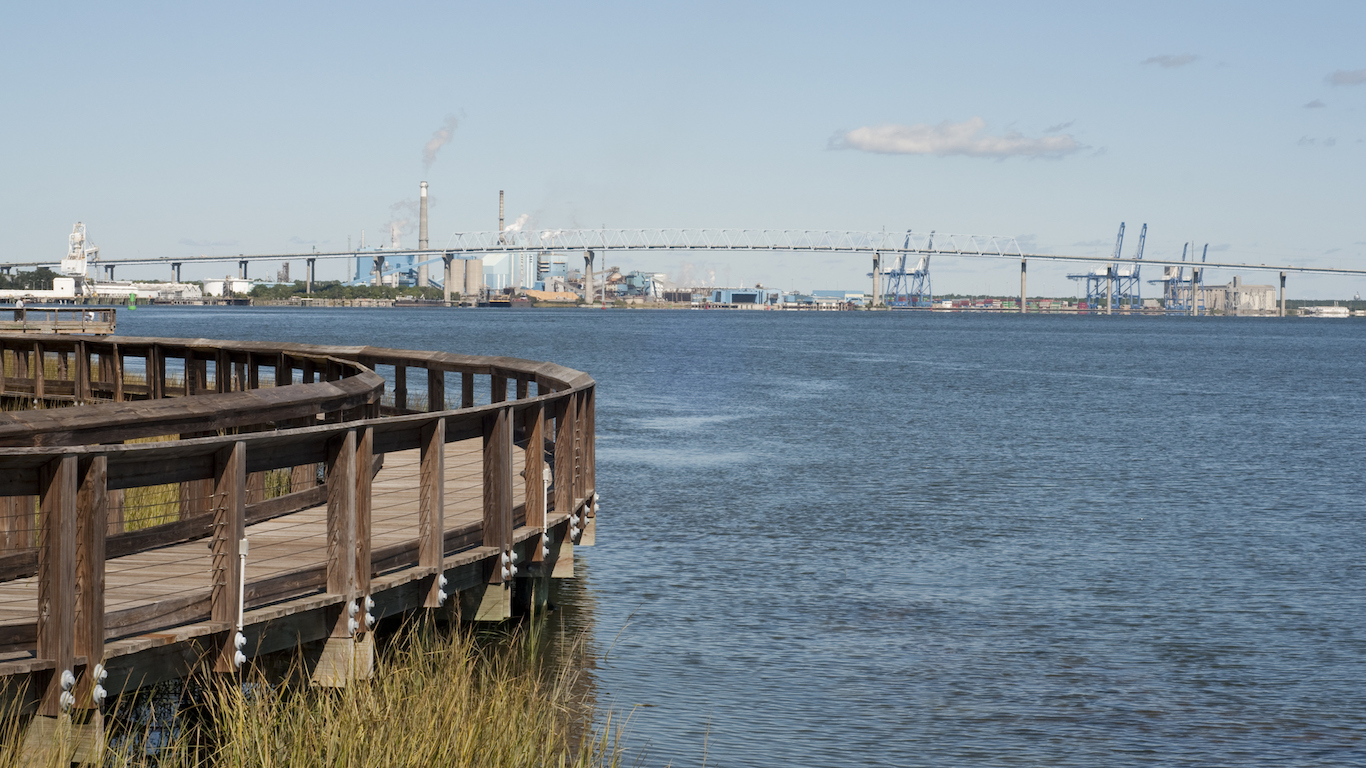
There were 19 murders in North Charleston in 2015, fewer than the 23 murders that took place in 2014. Although lower than 2014, the city’s 2015 murder rate was up 280% from half a decade ago — and appears to be climbing. There were 15 murders in North Charleston in the first half of 2016 alone, setting the city’s total murder count on pace for a 58% year over year increase.
North Charleston is adjacent to Charleston, which last year was the scene to one of the worst mass shootings in modern American history. The nine churchgoers gunned down by Dylann Roof during Bible study on June 17, 2015 at the Emanuel AME Church were not factored into North Charleston’s murder rate.
24. Chicago, Illinois
> Murder rate: 17.5 per 100,000
> No. of murders: 478
> Violent crime rate: 903.8 per 100,000
> Population: 2,728,695
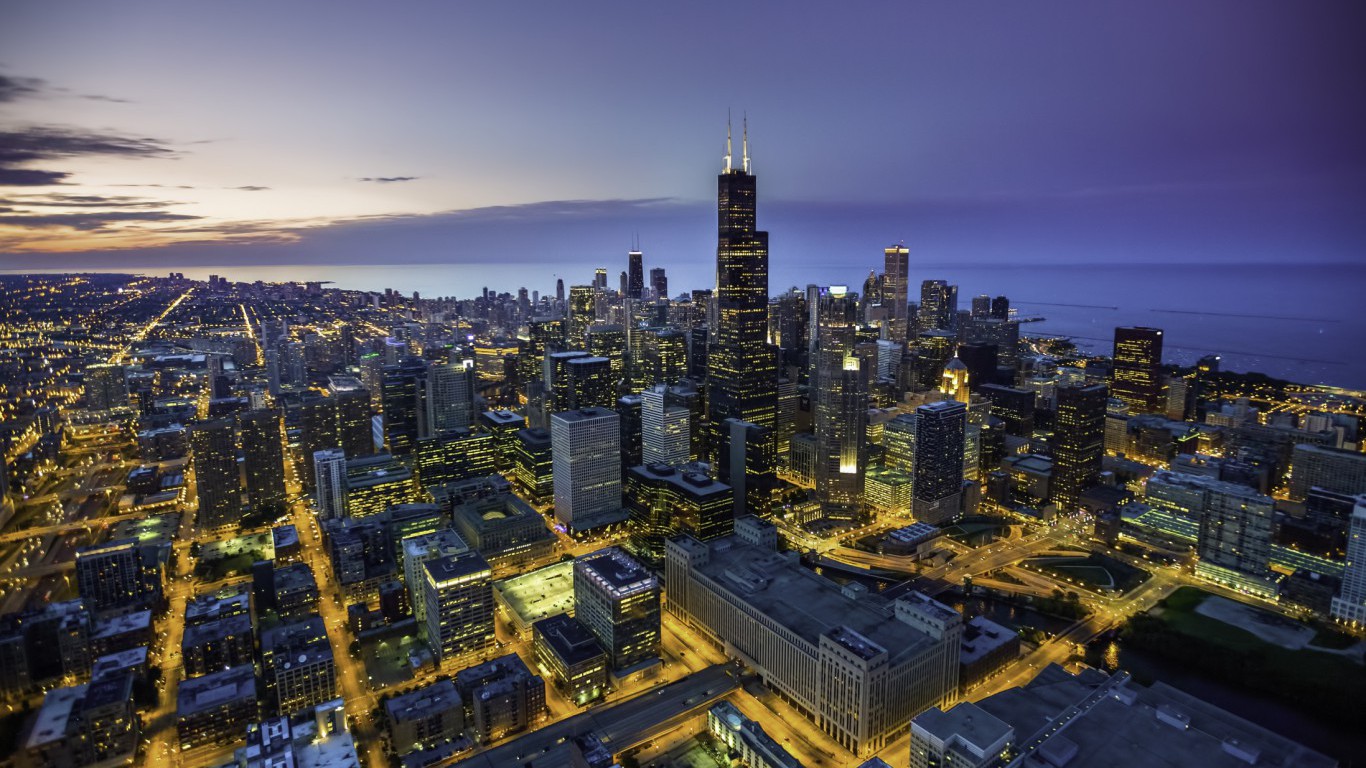
Chicago has recently garnered nationwide attention from the media and politicians for a catastrophic level of gun violence on its streets. There were more homicides in Chicago last year than in any other American city. The number of murders in 2015 reflect a 16.3% increase from the previous year and a 10.9% increase from 2011. Conditions are not getting better in the Midwestern city. After an especially deadly October, with 18 homicides over Halloween weekend alone, the number of 2016 murders in Chicago now exceeds 600, well above the 478 total in 2015. Gang violence is the primary cause of murder in Chicago.
With more than 2.7 million residents, the Windy City is one of the largest in the country. Though murder and gun violence in the city has dominated headlines nationwide, after adjusting for population, Chicago’s 2015 murder rate trails that of nearly two dozen other U.S. cities.
23. Philadelphia, Pennsylvania
> Murder rate: 17.9 per 100,000
> No. of murders: 280
> Violent crime rate: 1,029.0 per 100,000
> Population: 1,567,810
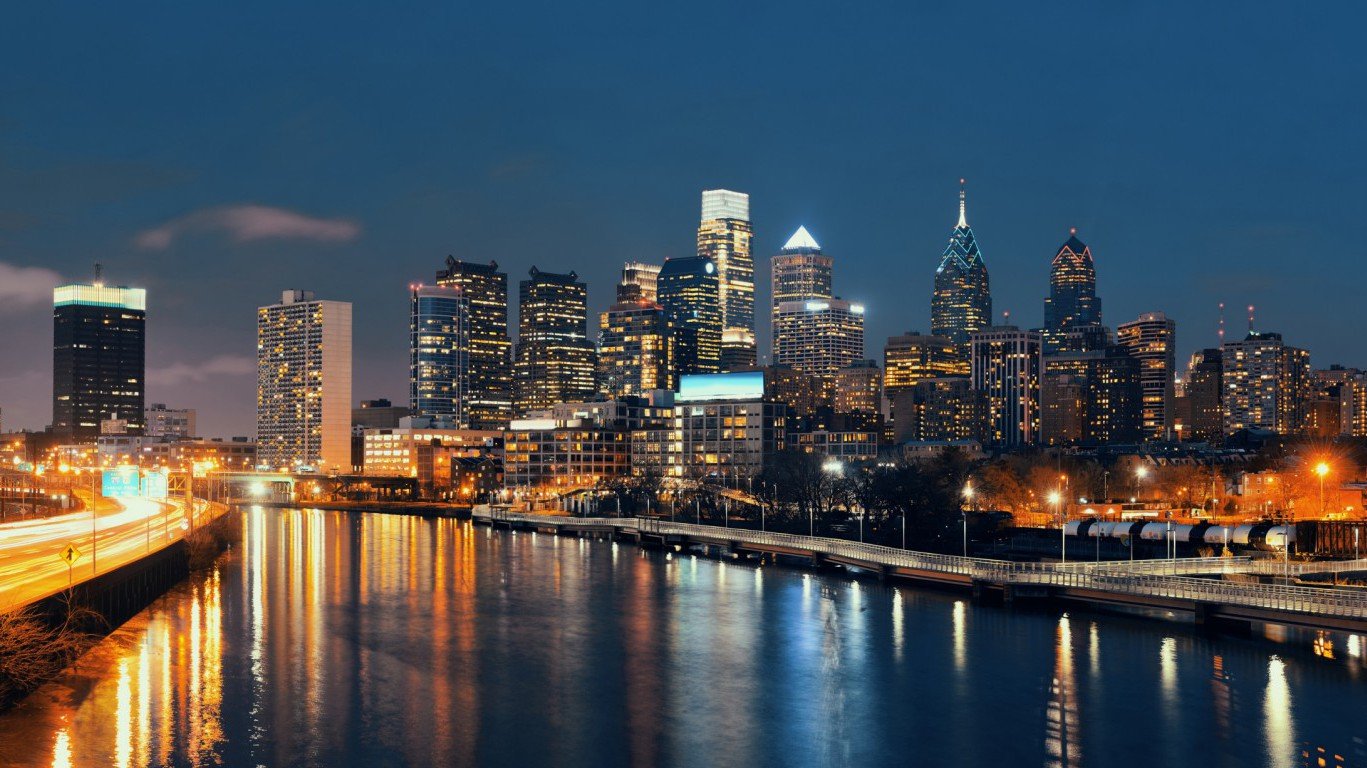
With more than 1.5 million residents, Philadelphia is the fifth largest U.S. city. Crime, including murder, tends to increase with population size, and Philadelphia had 280 homicides last year, more than in all but half a dozen other U.S. cities.
By the beginning of 2016, nearly half of the city’s murders from the previous year remained unsolved. City officials have blamed the poor homicide arrest rate on the city’s “stop snitching” culture, which originated in Baltimore and is designed to discourage cooperation with police investigations. In order to combat the prevailing culture, the Philadelphia Police Department offers $20,000 to anyone who provides information that leads to the arrest and conviction of a killer.
22. Dayton, Ohio
> Murder rate: 18.5 per 100,000
> No. of murders: 26
> Violent crime rate: 941.8 per 100,000
> Population: 140,683
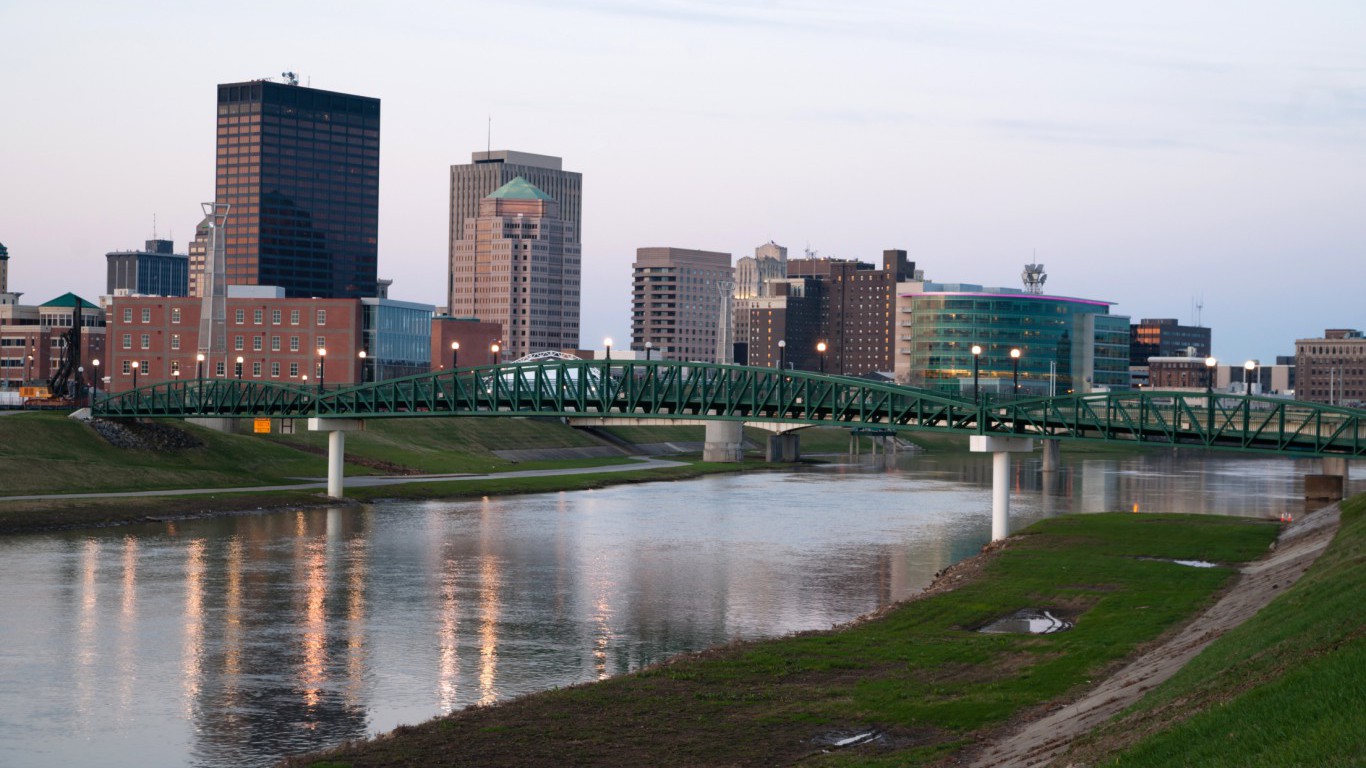
Violent crime tends to be more common in economically depressed areas. In Dayton, Ohio, a city with an especially high annual murder rate, more than a third of the population lives below the poverty line. A majority of Dayton residents, even those who are not living in poverty, are likely struggling financially, as the typical Dayton household earns only $28,174 a year, about $25,000 less than the national median.
Limited economic opportunities in Dayton, and across Ohio, have likely led to violence linked to drug trafficking. Multiple murders in Dayton this year appear to be drug related. In nearby Pike County, police blame an execution style killing that left eight family members dead on a Mexican cartel.
21. Pittsburgh, Pennsylvania
> Murder rate: 18.6 per 100,000
> No. of murders: 57
> Violent crime rate: 706.2 per 100,000
> Population: 306,870
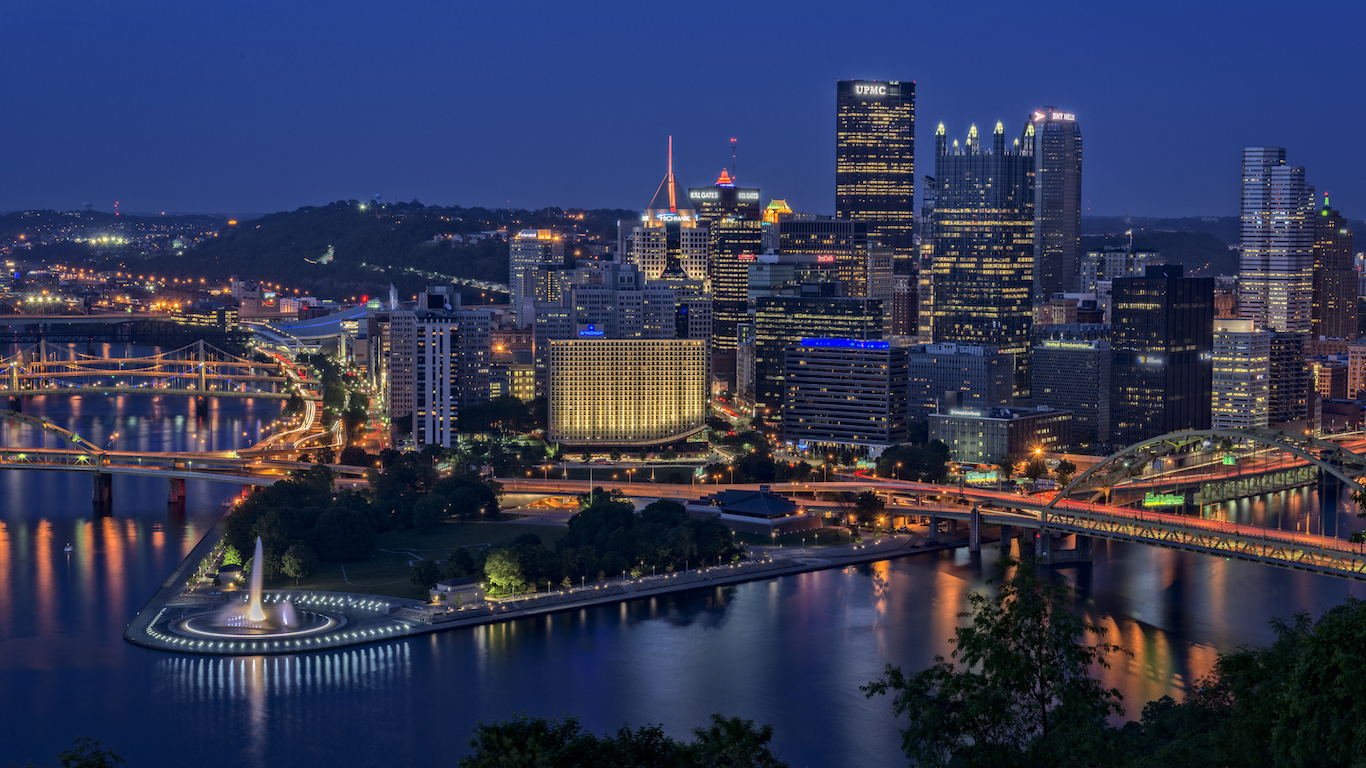
While Pittsburgh’s annual murder rate fell 17.4% from 2014, the number of non-fatal shootings increased over the same time period. Further, the city’s police chief acknowledged that the Pittsburgh police force was understaffed in 2015, an issue Mayor Bill Peduto promised to address.
The sizeable decline in the city’s murder rate is a break from the 10.8% nationwide spike in homicides. Still, compared to five years ago, Pittsburgh’s annual murder rate remains up by nearly 30%. It was one of two Pennsylvania cities with a near nation-leading homicide rate last year.
SOURCE: http://247wallst.com/special-report/2016/11/01/americas-25-murder-capitals/2/
.
25. North Charleston, South Carolina
> Murder rate: 17.4 per 100,000
> No. of murders: 19
> Violent crime rate: 735.4 per 100,000
> Population: 109,051

There were 19 murders in North Charleston in 2015, fewer than the 23 murders that took place in 2014. Although lower than 2014, the city’s 2015 murder rate was up 280% from half a decade ago — and appears to be climbing. There were 15 murders in North Charleston in the first half of 2016 alone, setting the city’s total murder count on pace for a 58% year over year increase.
North Charleston is adjacent to Charleston, which last year was the scene to one of the worst mass shootings in modern American history. The nine churchgoers gunned down by Dylann Roof during Bible study on June 17, 2015 at the Emanuel AME Church were not factored into North Charleston’s murder rate.
24. Chicago, Illinois
> Murder rate: 17.5 per 100,000
> No. of murders: 478
> Violent crime rate: 903.8 per 100,000
> Population: 2,728,695

Chicago has recently garnered nationwide attention from the media and politicians for a catastrophic level of gun violence on its streets. There were more homicides in Chicago last year than in any other American city. The number of murders in 2015 reflect a 16.3% increase from the previous year and a 10.9% increase from 2011. Conditions are not getting better in the Midwestern city. After an especially deadly October, with 18 homicides over Halloween weekend alone, the number of 2016 murders in Chicago now exceeds 600, well above the 478 total in 2015. Gang violence is the primary cause of murder in Chicago.
With more than 2.7 million residents, the Windy City is one of the largest in the country. Though murder and gun violence in the city has dominated headlines nationwide, after adjusting for population, Chicago’s 2015 murder rate trails that of nearly two dozen other U.S. cities.
23. Philadelphia, Pennsylvania
> Murder rate: 17.9 per 100,000
> No. of murders: 280
> Violent crime rate: 1,029.0 per 100,000
> Population: 1,567,810

With more than 1.5 million residents, Philadelphia is the fifth largest U.S. city. Crime, including murder, tends to increase with population size, and Philadelphia had 280 homicides last year, more than in all but half a dozen other U.S. cities.
By the beginning of 2016, nearly half of the city’s murders from the previous year remained unsolved. City officials have blamed the poor homicide arrest rate on the city’s “stop snitching” culture, which originated in Baltimore and is designed to discourage cooperation with police investigations. In order to combat the prevailing culture, the Philadelphia Police Department offers $20,000 to anyone who provides information that leads to the arrest and conviction of a killer.
22. Dayton, Ohio
> Murder rate: 18.5 per 100,000
> No. of murders: 26
> Violent crime rate: 941.8 per 100,000
> Population: 140,683

Violent crime tends to be more common in economically depressed areas. In Dayton, Ohio, a city with an especially high annual murder rate, more than a third of the population lives below the poverty line. A majority of Dayton residents, even those who are not living in poverty, are likely struggling financially, as the typical Dayton household earns only $28,174 a year, about $25,000 less than the national median.
Limited economic opportunities in Dayton, and across Ohio, have likely led to violence linked to drug trafficking. Multiple murders in Dayton this year appear to be drug related. In nearby Pike County, police blame an execution style killing that left eight family members dead on a Mexican cartel.
21. Pittsburgh, Pennsylvania
> Murder rate: 18.6 per 100,000
> No. of murders: 57
> Violent crime rate: 706.2 per 100,000
> Population: 306,870

While Pittsburgh’s annual murder rate fell 17.4% from 2014, the number of non-fatal shootings increased over the same time period. Further, the city’s police chief acknowledged that the Pittsburgh police force was understaffed in 2015, an issue Mayor Bill Peduto promised to address.
The sizeable decline in the city’s murder rate is a break from the 10.8% nationwide spike in homicides. Still, compared to five years ago, Pittsburgh’s annual murder rate remains up by nearly 30%. It was one of two Pennsylvania cities with a near nation-leading homicide rate last year.
SOURCE: http://247wallst.com/special-report/2016/11/01/americas-25-murder-capitals/2/
.

